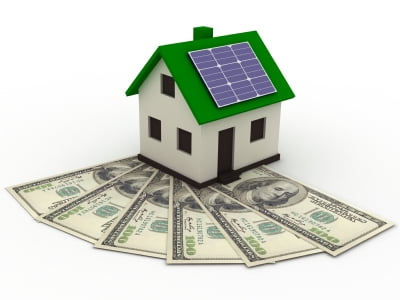Updated 10/15/10. Updates appear in blue below.
Updated 1/28/11. The California Energy Commission recently published the HERS Booklet: What Is Your Energy Rating? Have energy-conscious clients? Forward them a copy of the new booklet today!
This article discusses the California Home Energy Rating System (HERS), the methods and benefits of increased energy-efficiency and an agent’s use of the rating scheme in home sales.
The greening of real estate
Consider a first-time homebuyer who, acting on his own and without the advice of a buyer’s agent, finally finds a fixer-upper for his starter home. He is able to foresee the costs of replacing the peeling wallpaper and obsolete bathroom fixtures, but has no practical idea about the costs of time and money to properly renovate the home.
In his first month in residence, the uncapped air conditioning ducts, badly sealed window frames and insufficient ceiling insulation cause his utility bills to skyrocket past his pre-closing estimates. Now the numbers look more like his mortgage payments than gas and electric bills, and the buyer is left wondering about his options — other than cutting back on heating, cooling and lighting the home.
The buyer’s financial options are more limited after acquiring the property than they were when he negotiated to purchase it. As an owner, the buyer is responsible for the costs of any improvements to his home, and updating the home’s energy-efficiency has the potential to become costly. Had the buyer retained a selling agent prior to making an offer or entering into a purchase agreement, he would likely have been advised to ask for a home energy audit (energy audit).
With the energy audit in hand, a buyer can incorporate the costs of the recommended energy efficient updates into the price he is willing to pay for the property. He can also use that information to compare the energy-efficiency of the home he is considering to other properties before making an offer. Information is powerful corroboration for justifying the terms and conditions of an offer, but it is needed upfront.
The home energy rater
The Home Energy Rater (Rater) is trained and certified by one of The Department of Energy’s (DOE) certified providers:
- The California Certified Energy Rating & Testing Services (CalCERTS);
- California Home Energy Efficiency Rating System (CHEERS); and
- California Building Performance Contractors Association (CBPCA).
Home energy audit providers are private, non-profit organizations approved by the DOE as part of the California Home Energy Rating System (HERS) program. Audit providers train, test and certify professional Raters. However, as of January 1, 2011, home inspectors, if requested by a client, are authorized to perform HERS home energy audits. The home energy audit must meet the requirements of the HERS regulations established by the California Energy Commission.
Raters are trained through both classroom and field work in the theories of energy conservation, analysis of a structure’s energy related components and the practical application of the training on the following subjects:
- home energy consumption;
- efficiency data collection, organization and analysis;
- principles of heat transfer;
- building energy feature design and construction practice;
- safety practices relevant to home energy auditing procedures and equipment;
- home energy audit procedures;
- energy-efficiency effects of building site characteristics;
- types and characteristics of space heating, space cooling, service hot water and hard wired lighting system;
- methods of cost-effectiveness analysis including interest and discount rates, cost-benefit ratios, life cycle cost analysis, calculation of present value, cash flow analysis, payback analysis and cost estimation;
- function and proper use of diagnostic devices, including:
- duct leakage testing equipment;
- blower doors;
- air flow devices; and
- air pressure devices;
- construction types, equipment types and their associated energy-efficiency ramifications;
- field verification and diagnostic testing requirements;
- interpretation of prioritized recommendations for energy-efficiency improvements and customized adjustment procedures for specific occupants; and
- behavioral, psychological, cultural and socio-economical influences on energy consumption of home occupants in the United States and California.
After an extensive training process, the Rater is certified to do freelance energy audits, as long his assessment of the energy conditions of the property is based on guidelines established by the HERS program. Anyone can hire a Rater to do an audit, the cost of which usually ranges between $300-$800. [See first tuesday Form 150 11.1(h)]
Let the energy ratings begin
The California Energy Commission designed and implemented the HERS program to include a uniform rating scheme for the systematic delivery of home energy ratings to homeowners by certified Raters. HERS also established cost-effective methods for improving a home’s energy-efficiency level.
A Rater is hired by a homebuyer or owner to assess the energy uses of a home, including:
- space heating/cooling;
- service hot water;
- lighting in conditioned space;
- exterior lighting mounted on buildings or unconditioned garage;
- electric/gas appliances; and
- other interior electric and gas uses specified in the HERS Technical Manual.
The Rater is also responsible for conducting a utility bill analysis and estimating carbon dioxide emissions.
The Rater then uses all of these factors to give the home a California Whole-House Home Energy Rating (energy rating). The energy rating is a numerical representation taken from the Time Dependent Valued (TDV) energy scale. The TDV numerical rating represents the level of energy consumed, produced and delivered to the home. The TDV is calculated by the Rater using an hourly energy consumption simulation program approved by the Energy Commission.
The numerical scale for TDV ratings runs from zero to 150. Zero represents a home which produces as much or more energy than it consumes. A rating of 100 represents a standard new home built with current energy standards. A rating of over 100 indicates the home does not meet present energy standards for new construction.
The final step in the Rater’s assessment includes recommendations for energy efficient improvements for the home he has inspected. The Rater will list the cost-effective improvements he believes will upgrade the energy-efficiency of the home.
Seeing through walls for energy inefficiency
While an energy audit can detect a wide array of energy inefficiencies, the least invasive method of finding inefficient energy defects in the home is through an infrared inspection. An infrared inspection, called an Infrared Energy Envelope Survey (IR Survey), has recently been made available in Southern California. Described as an x-ray for the home, infrared allows the inspector to see what is happening behind the walls, floor or ceiling to determine if there is a difference in the surface temperature of the shell and thermal areas around it.
An IR Survey determines energy factors that may be overlooked without the ability to see what’s happening behind the walls. The potential problems revealed in an IR Survey include:
- insulation value;
- moisture and moisture-related damage;
- hidden roof leaks (particularly useful with flat roofs);
- faulty wiring or electric (reveals electrical hot spots);
- construction and structural defects;
- pipe and duct work leakage;
- foundation cracks;
- termite damage inside walls; and
- other animal or rodent damage.
Currently, the IR Survey has limited availability in the Southern California area, as there are very few certified Specialist-Infrared Residential Inspectors (SIRI). A standard IR Survey requires approximately two hours and runs about $300.















